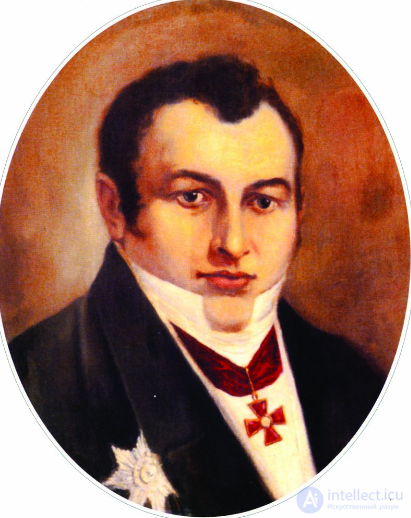Lecture
Baron Pavel Lvovich
On October 21, 1832, Pavel Lvovich Shilling demonstrated the world's first electromagnetic telegraph. The five-room apartment turned out to be small for demonstration, and the scientist hired the entire floor. The transmitter was installed at one end of the building where the invitees gathered, and the receiver at the other, in the Schilling office. The distance between the devices was over 100 m.

Interest in the invention was so great that the demonstration lasted until the Christmas holidays. Among the visitors were academician Boris S. Jacobi, Count Benkendorf, Emperor Nicholas I, Grand Duke Mikhail Pavlovich.
Today we can appreciate the telecommunications pioneer scheme. Six pairs of core, a pair of ringing and a pair of common keys. Each pair is connected to the receiving station with one wire. The wires of the main and call buttons at the station are connected to the windings of the respective multipliers, the other ends of which are connected to the common return wire. The keys of each pair look different in color. When you press a primary or call key of the same color, the line wire is connected to one pole of the battery, and when you press a different color key, to another. A common pair of keys is included in the circuit in such a way that pressing a key of a common pair of the same color as the color of the main or call key always connects the common line wire to the opposite pole of the battery. In order to send a current of one direction through a certain multiplier, you must simultaneously press the corresponding main and common keys, both of which must be the same color.
The prehistory of the creation of this telegraph is extremely interesting. After all, information about the telegraph as a completely finished invention occurs even before 1830. For example, Schilling’s colleague F. P. Fonton wrote in May 1829:
"It is very little known that Schilling invented the new image of the telegraph. Through the electric current conducted over the wires stretched between two points, he draws signs, of which the combinations make up the alphabet, words, sayings, etc.) it will replace our current telegraphs, which, in foggy, obscure weather, or when sleep attacks telegraphers, which are as dumb as mists. "
The conditional alphabet has already been used in a semaphore telegraph. There was no need for a minimum number of working characters. Ivan Kulibin used two characters for each letter or syllable, which required more than 100 signals. The alphabet of Claude Schapp contained 250 signals for 8464 words, written on 92 pages, 92 words each.
The task posed by P. L. Schilling was to create a telegraph code that would allow one-time transmission of each letter with the minimum number of wires, that is, with the smallest number of working characters denoting a given letter. And the solution to this problem, which determined success, was found in China (!).

The telegraph of P. L. Schilling (1832)
The choice of six working multipliers and main linear wires for the apparatus by Schilling is not accidental. In 1828 he received the rank of State Councilor and from that moment on became a corresponding member of the Academy of Sciences for literature and antiquities of the East.
In May 1830, P. L. Schilling was sent on special instructions from the government to the borders of China. In addition to searching for rare manuscripts, the researcher is engaged in the study of the Chinese language, acquainted with the life and philosophy of this country. He was shocked by the ability of Chinese soothsayers to guess the future with the help of a simple system of 64 figures. Each such figure (hexagram) consisted of six lines of two types - continuous and intermittent. Today this system, i-jing, is widely known in the world.
On his return to Petersburg in March 1832, Schilling began to implement his project with a new force. “If using a combination of six lines it is possible to tell the whole destiny of a person, then it’s all the more necessary to transfer the alphabet!” - so, probably, he reasoned. We already know about the results of the "crossing" of Eastern wisdom, German practicality and Russian ingenuity.
A contemporary of Pushkin and Gogol, Schilling was the first in the world to prove the possibility of practical application of electromagnetic phenomena for communication needs and opened the way for Morse, Cook and Wheatstone. He rejected numerous lucrative offers to sell his telegraph to England or the United States, he considered it his duty to deliver telecommunications in Russia.
The fruits of Pavel Lvovich Schilling are presented in the expositions of the Moscow Polytechnic Museum and the Central Museum of Communications in St. Petersburg.
Comments
To leave a comment
History of computer technology and IT technology
Terms: History of computer technology and IT technology